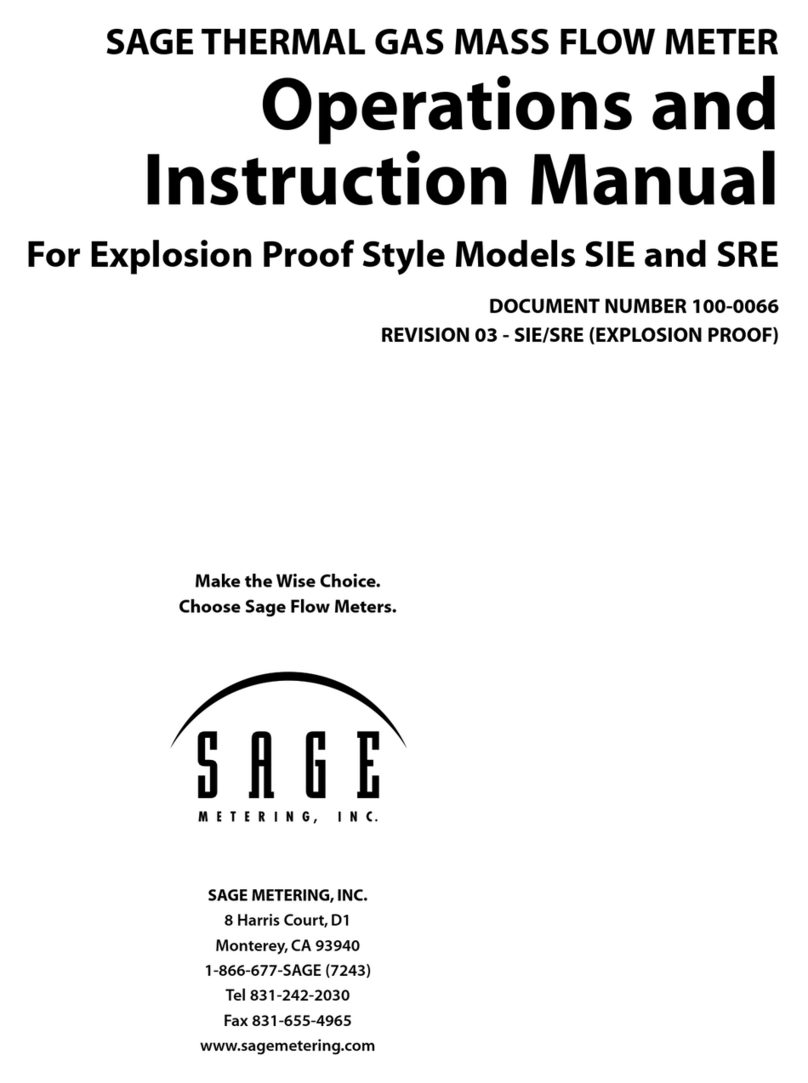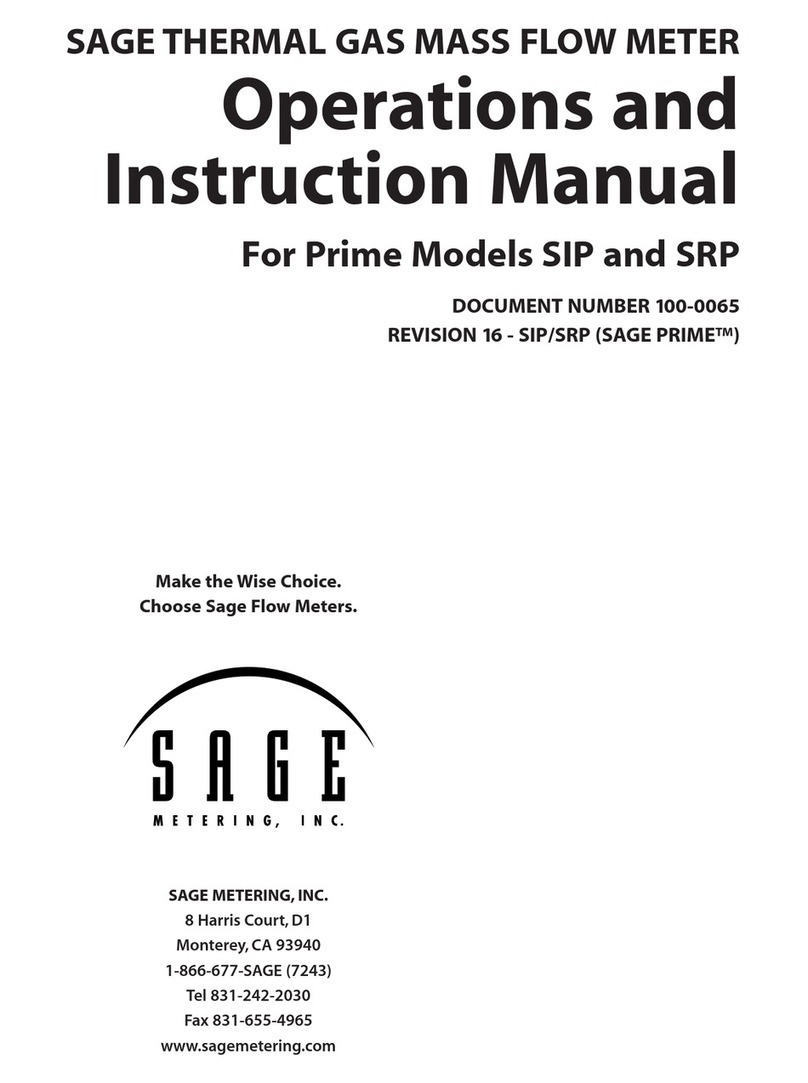
S A G E M E T E R I N G , I N C . O p e r a t i o n s a n d I n s t r u c t i o n M a n u a l
10
REV. 10-SIX/SRX
INSTALLATION AND MOUNTING
The EN 60079-14 must be considered
■Che k the Certifi ate of Conforman e in luded
with your Sage Thermal Mass Flow Meter for
system pressure, temperature, gas omposition,
power input, and signal output.
■It is re ommended that the flow meter be inserted in
a lo ation of maximum straight run. It is suggested
that there be a minimum of 15 pipe diameters of
straight run upstream, and 5 diameters downstream,
depending on the onditions. See hart on page 11.
Note, obstru tions su h as valves, blowers, expand -
ers and PVC and HDPE pipes will require addition-
al straight run ( onta t fa tory for assistan e).
■Che k the orientation1: Standard alibration flow
dire tion is left to right when fa ing the flow
meter. Gas flow dire tion is marked with an arrow
on in-line flow meters; UPSTREAM is marked on
insertion probes.
■Do not rotate probe1, or errors may o ur. If en lo-
sure is fa ing in orre tly, rotate the en losure 180˚,
but do not rotate the probe. The UPSTREAM mark
still needs to be fa ing Upstream.
■Hook up the system per the wiring diagram pro-
vided with your Sage flow meter (see inside of rear
ompartment over for terminal designation).
Double he k that wiring for the proper power and
signal onne tions are orre t.
■Che k that all plumbing and ele tri al hook-ups
are in a ordan e with OSHA, NFPA, and all other
safety requirements.
■For Remote Style Meters (SRX) be sure the Remote
Electronics is matched with the Transmitter’s
Junction Box and its attached Probe or Flow
Body. There will be Metal Serial Number Tags
on both the Transmitter as well as the Remote
Electronics enclosure. Do not mismatch the seri-
al numbers o the Remote Electronics and the
Junction Box, or calibration errors will occur.
LOCATING PROPER WIRING DIAGRAM
1) Look at the sti ker on your meter. The first three
digits des ribe the basi model that you have.
Refer to the appropriate page numbers below for
your wiring diagram
2) SIX: see page 19
3) SRX: see page 22 for input/output terminals;
see page 24 (Jun tion Box Wiring Terminals
for Remote Style Meters)
4) SIX/SRX HART: see page 64–65
WIRING
Follow the instru tions below to remove the rear ap
for wiring. CAUTION: Do not open the display side!
Before removing the rear ap to a ess the wiring
terminals it is essential to loosen the set s rew used
to lo k down the ap. After the wiring is ompleted
(see pages 18 to 23 for wiring details or pages 64–65
for HART), please lose the lid, and re-tighten the set
s rew in the same manner.
The intended use of the SIX/SRX is for industrial
appli ations in hazardous atmospheres of up to
zone 1: gas, vapors, and mists. Note: See page 31 f r
Hazard us L cati n Appr vals.
Customer repair of the produ t (or repla ement of
omponents) is not allowed. If the equipment is
used in a manner not spe ified by the manufa turer,
the prote tion provided by the equipment may be
impaired. Permanently onne ted equipment shall
employ a swit h or ir uit breaker as a means for
dis onne tion in the installment.
1The Integral Style of Sage Rio Insertion Meters have the Display oriented as shown on page 14.
If an alternate orientation of the display or enclosure is required (ie. installation into a vertical pipe)
please furnish a sketch or drawing and specify “ROTATE” on purchase order. However if it is later
determined that the enclosure needs to be rotated that procedure can be done in the field. However
if the display needs to be rotated then the meter must be sent back to Sage to be modified. Do not
attempt this in the field. An RMA will be required prior to returning the meter (see page 51). The
procedure for rotating the enclosure is as follows: Clamp the enclosure of the Rio in a vise with the
probe pointing up to the ceiling. Then take a 7/8 wrench and turn the probe to the proper orienta-
tion. Lock the probe into its new position with a set screw (not provided).





























